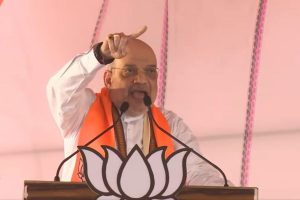The National Human Rights Commission (NHRC) was created by the Protection of Human Rights Act which was passed by Parliament in 1993. For the first time in the annals of the country, a Commission was set up exclusively for the protection and promotion of human rights. It is a blue-ribbon Commission, with a former Chief Justice of the Supreme Court as the Chairman and includes as members, a Chief Justice of the High court and a judge of the Supreme Court and an administrator with experience in the field of human rights.
I joined as the first Director General in charge of Investigation in the Commission. Since its inception, the Commission had been flooded with a large number of complaints of various forms of human rights violations. However, most of the complaints were against the police for violations of human rights.
Advertisement
After I joined the Commission, the Chairman asked me to quickly set up an investigation wing in the Commission from scratch to promptly deal with cases of egregious violations of human rights and place its reports before the Commission.
He cautioned that investigation should be not only non-partisan and above board, but must bear the stamp of professional competence. The Ministry of Home Affairs, the nodal ministry, held the view that a skeletal investigation wing would suffice for the needs of the Commission and it could be allowed to utilise services of the investigation agencies of the Central and state governments. But I felt and explained to the Commission that without an effective investigation wing, it would become a toothless tiger.
There were, as expected, serious objections from the government for the sanction of staff proposed by me. But with the decisive intervention of the Commission, the bureaucratic hurdles collapsed like nine pins and our original proposal with minor modifications was accepted and adequate staff was sanctioned. Very soon, the Commission was deluged with cases of grotesque violations of human rights and successfully investigated a number of cases which stirred public attention and received wide coverage in the media. One shocking case of police brutality and insensitivity remains vivid in my mind.
A lady named Rita Dhawan from Ranchi, complained before the Commission that her husband Suresh Dhawan, a businessman and owner of a clothing store in Ranchi, was waylaid and shot dead by the police. The police led by an inspector, had surrounded his car and demanded Rs 1 lakh rupees and on his refusal to cough up the amount, shot and killed him. The police on the other hand, had dubbed him as a Naxalite who had challenged and opened fire at them. At the Commission’s instance, a case was registered and the state CID took up the investigation of the case monitored by the NHRC.
The case was charge-sheeted, but it was hanging fire in the court for a long period. The Chairman of the Commission in a letter to the Chief Justice of India drew the attention of the latter to the inordinate delay in the disposal of the case. This had the desired effect. The police Inspector and his cohorts were convicted and sentenced to death. Never before in the past had the death penalty been imposed on police personnel for committing an offence like this.
The grim outcome pleased me because this would send an appropriate deterrent message to the criminals in uniform. Later, the apex court commuted the death sentence to life imprisonment. The Commission also ordered payment of compensation to the tune of Rs 10 lakhs to the family of the deceased. However, the State government took the stand that since the accused persons have been convicted and sentenced to death there was no justification for paying compensation, which would impose a financial burden on the state.
The Commission disagreed with this contention and pointed out that the culpability of public servants in a criminal trial and their conviction do not put at rest the claim for compensation for immediate relief to the victims as envisaged under the Protection of Human Rights Act.
The culpability of the involved public servants cannot absolve the state of its liability to pay compensation to the victim. The state government complied with the recommendation. The case also unveiled the shady and seamy past of Inspector Dudh Nath Ram, the villain of the piece. He was earlier a member of a dacoit gang and had cases of dacoity and murder against him. He was also close to Ramsunder Das, who later became the Chief Minister of Bihar for a short period. Utilising his proximity to the Chief Minister, he got a sub-inspector’s job in the police without proper verification of his antecedents.
He remained corrupt and untrammelled because of his political connections. But due to the NHRC’s decisive intervention, at last, he got his just deserts. The wheels of justice grind slowly but exceedingly fine.
(The writer is Senior Fellow Institute of Social Sciences, a former Director General of the National Human Rights Commission and former Director, National Police Academy.)
















